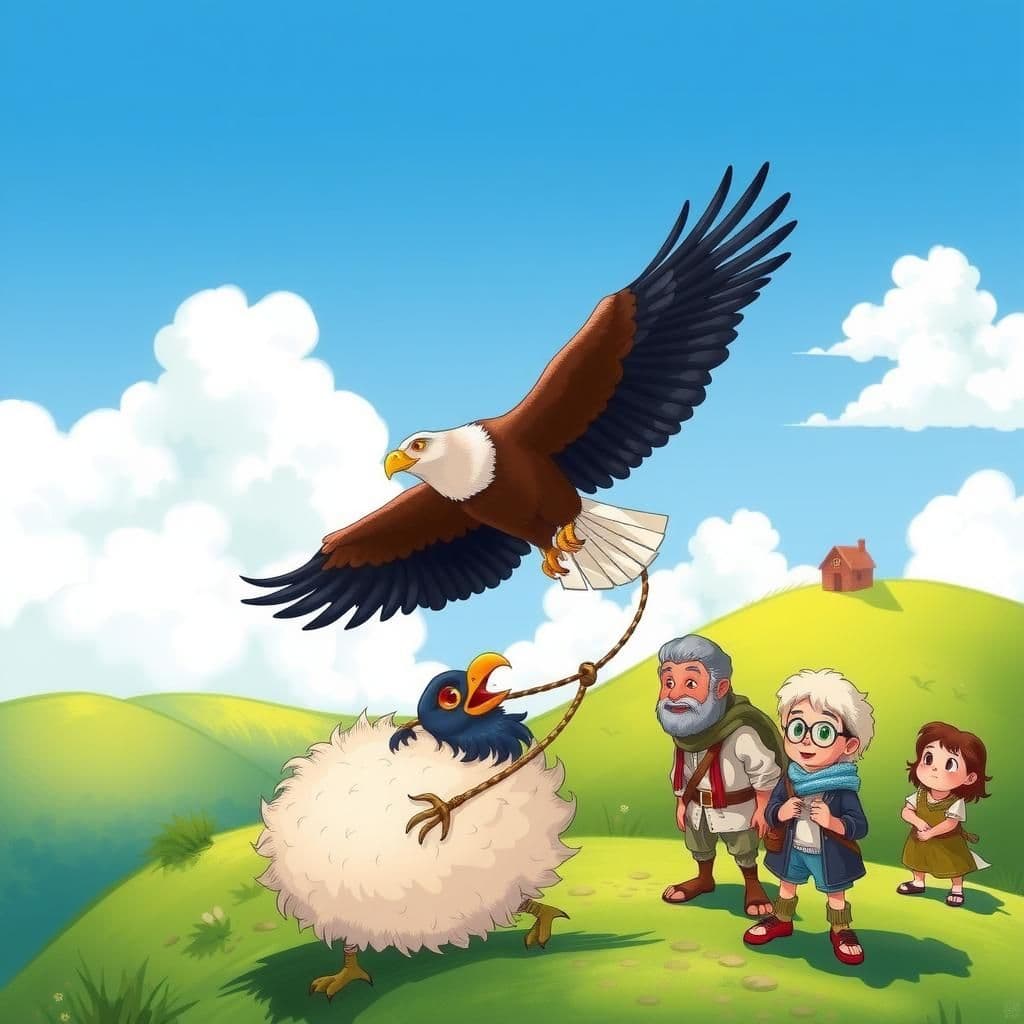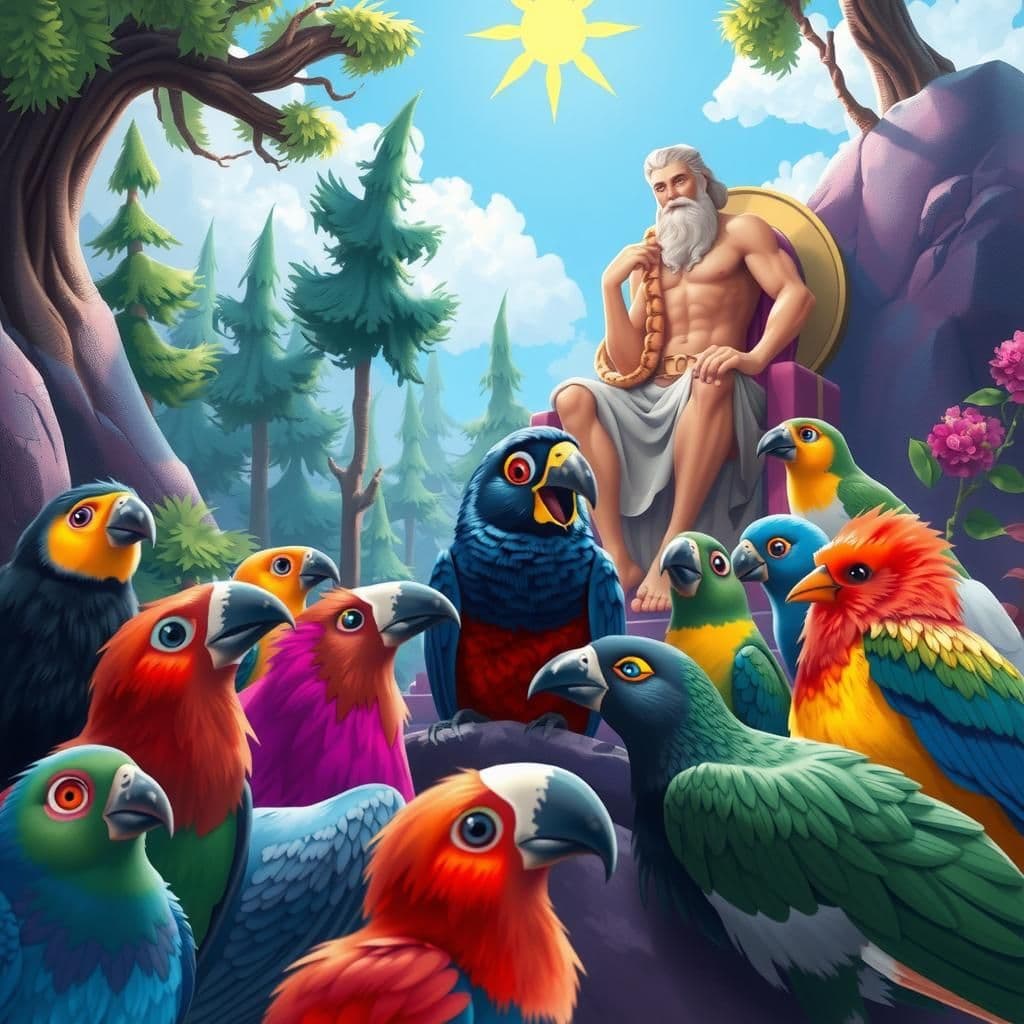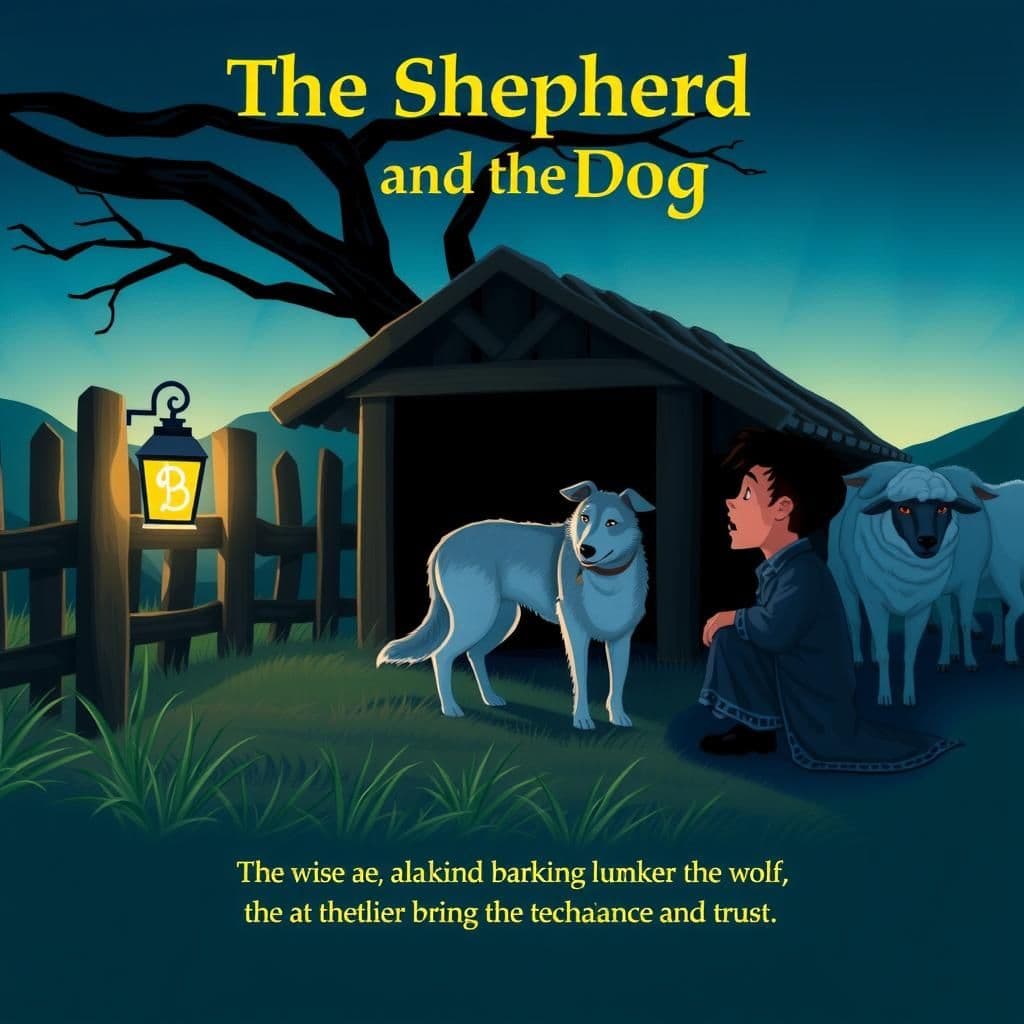The Eagle and the Jackdaw
In "The Eagle and the Jackdaw," a Jackdaw, envious of the Eagle's strength, attempts to capture a ram to prove his prowess, only to become ensnared in the fleece. Captured by a shepherd, the Jackdaw learns a valuable lesson: pretending to be something one is not can lead to humiliation. This easy small story imparts a quick moral about the importance of accepting one's true nature rather than envying others.

Reveal Moral
"The moral of the story is that one should not attempt to imitate others beyond their capabilities, as it can lead to failure and humiliation."
You May Also Like

Jupiter and the Birds
In "Jupiter and the Birds," Jupiter calls upon all the birds to choose the most beautiful one as their king. The jackdaw, disguised with borrowed feathers, initially impresses but is soon exposed, prompting indignation from the others. However, Jupiter praises the jackdaw's cleverness, declaring him king and illustrating a thought-provoking moral: that wit is more valuable than mere appearance, making this a memorable story with moral significance.

The Shepherd and the Dog
In the short bedtime story "The Shepherd and the Dog," a shepherd nearly makes the mistake of penning a wolf with his sheep for the night. The wise Dog warns him that this decision endangers the safety of the flock, illustrating a simple lesson from stories about the importance of discernment. This moral story for kids emphasizes that not all companions are safe, a vital lesson in choosing who to trust.

An Inflated Ambition
In "An Inflated Ambition," a corporate president enters a dry-goods shop and encounters a placard urging customers to ask for what they desire. Just as he is about to express his wishes, the shopkeeper directs a salesman to "show this gentleman the world," illustrating the irony of ambition and the moral that true fulfillment often lies beyond material wants. This easy small story with moral lessons serves as a thought-provoking tale for young readers, emphasizing the importance of understanding one’s true desires.